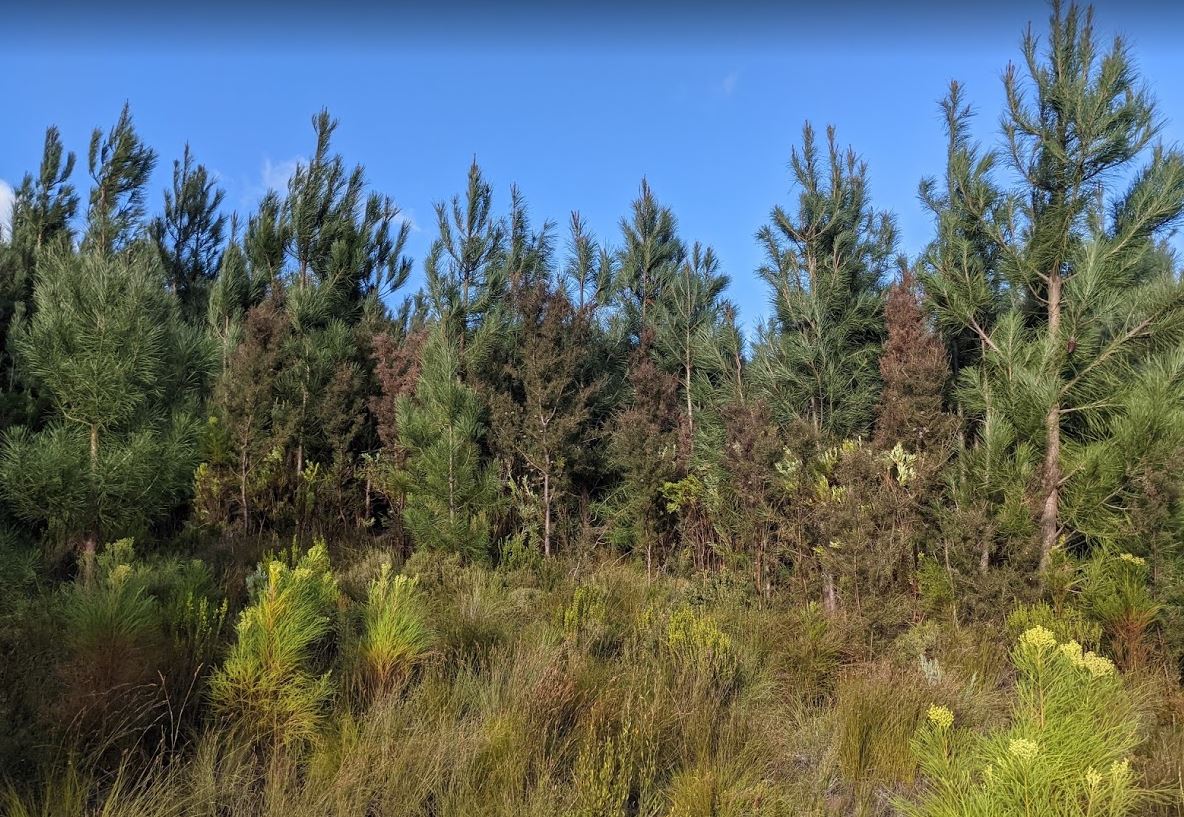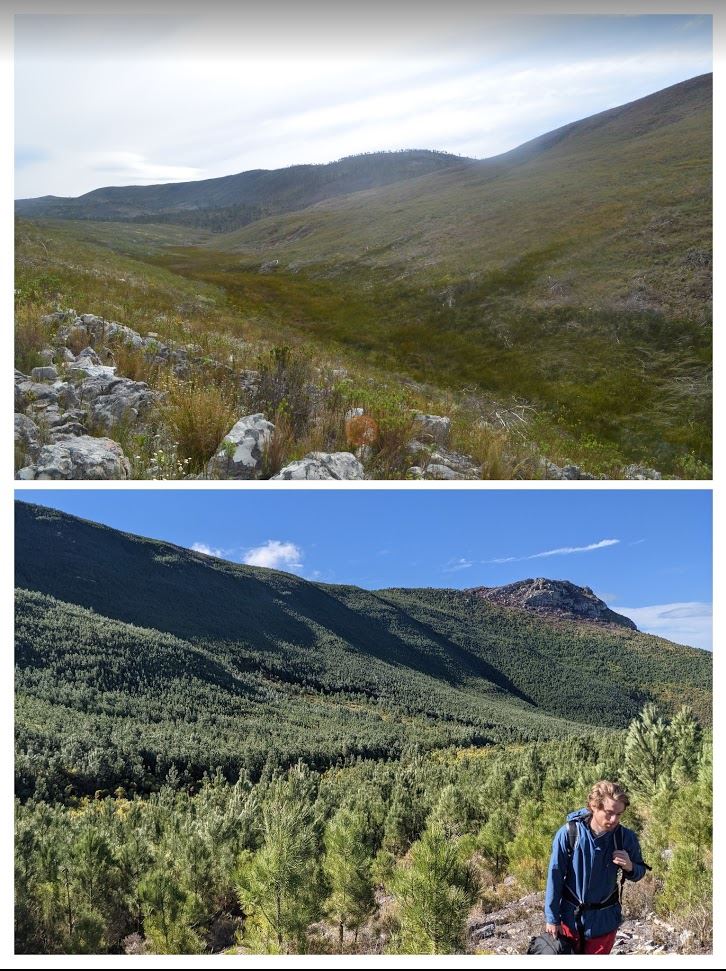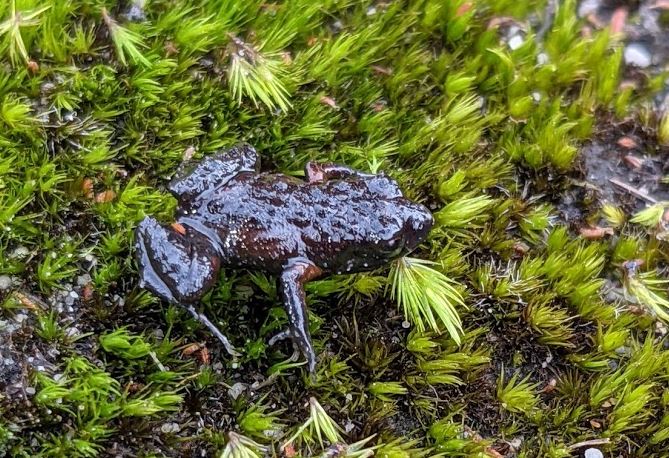Impacts of volunteers on invasive plants
As a volunteer, it can sometimes be very disheartening to work clearing alien invasive plants, because they pop back up so quickly and the task seems so much bigger than you are. But, in a recently published study by Nolwethu Jubase, we show that not only do volunteers make a significant impact on the problem, but they get a lot more from it than just cutting down aliens.
Being faced with a never ending barrage of invasive plants might seem enough to get your spirits down and give up. But in the Western Cape, volunteer groups are strong and derive great satisfaction from ridding the area of invasive species. Nolwethu estimated that their work amounts to nearly 5 300 ha of land cleared of aliens per year with labour costs equivalent to ZAR 5.1 million! This is a significant input into the fight against invasive plants, but the groups could do with better support. Currently, volunteers put their own monies into work needed at the sites, but need training for many of the aspects of removal and use of herbicides.
Of the many problems that the groups face, support from authorities seems particularly lacking. There is a great need for coordinating the groups so that their activities fit into the bigger picture. This role needs to be taken on by a national authority, such as SANBI. Particular problems faced by the groups included the movement of governmental organised alien clearing. Sometimes land cleared by volunteers is then cleared by government workers the next week.
On the up side, volunteers get a lot out of their time spent removing invasive woody aliens from the fynbos of the Western Cape. They learn and get inspiration from others in the group and receive feelings of satisfaction, happiness and a sense of achievement.
Read more about the study:
Jubase, N., Shackleton, R.T., Measey, J. (2021) Motivations and contributions of volunteer groups in the management of invasive alien plants in South Africa’s Western Cape province. Bothalia - African Biodiversity & Conservation 51(2), a3. http://dx.doi.org/10.38201/btha.abc.v51.i2.3 pdf



